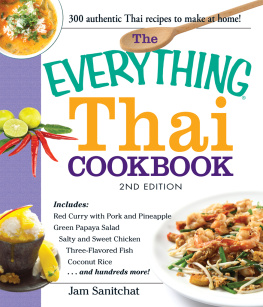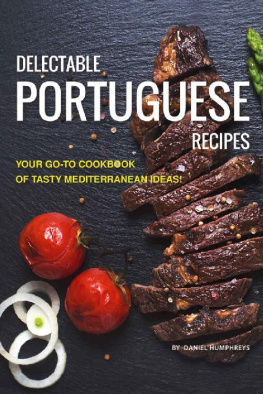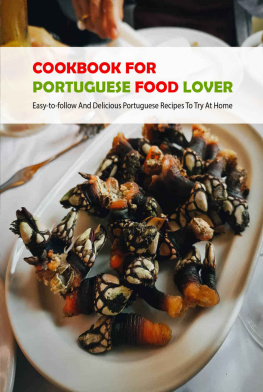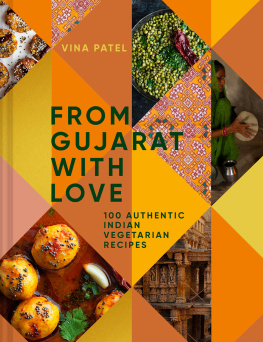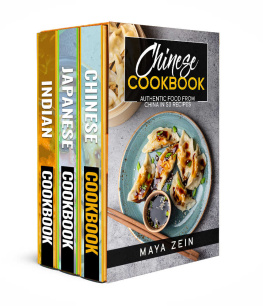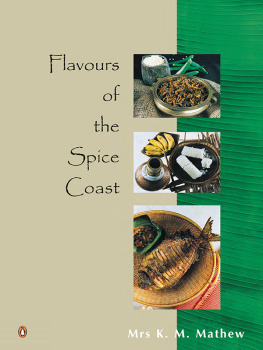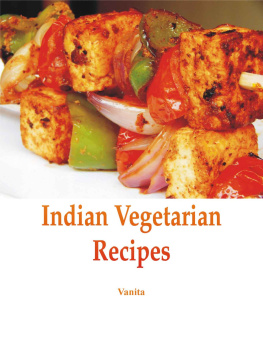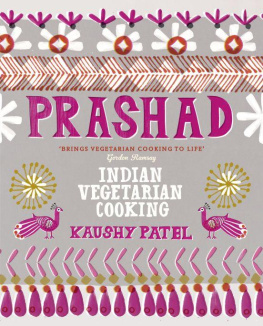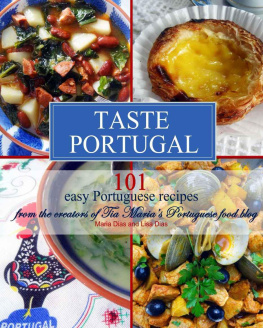PENGUIN BOOKS
UK | Canada | Ireland | Australia
New Zealand | India | South Africa
Penguin Books is part of the Penguin Random House group of companies whose addresses can be found at global.penguinrandomhouse.com.
This collection published 2016
Copyright Maria Teresa Menezes 2000
The moral right of the author has been asserted
ISBN: 978-0-141-00087-9
This digital edition published in 2016.
e-ISBN: 978-9-351-18001-2
This book is sold subject to the condition that it shall not, by way of trade or otherwise, be lent, resold, hired out, or otherwise circulated without the publishers prior consent in any form of binding or cover other than that in which it is published and without a similar condition including this condition being imposed on the subsequent purchaser.
To Henry
without whose encouragement my repertoire might have been confined to fish curry and sorpotel. He was my chief mentor and taster, and his appreciation spurred me on to try new recipes and innovations, most of which appear in this book.
PENGUIN BOOKS
THE ESSENTIAL GOA COOKBOOK
Maria Teresa (Tessa) was born in Mumbai in 1926. She graduated from St. Xaviers College and soon after, married an officer in the Indian Navy. Her father, as Honorary Counsel for Brazil, would often entertain at home, with one of the daughters being made responsible for the menu and overseeing the cooking. The cuisine was normally Goan. Tessas mother-in-law, Maria Felicia Menezes, was also an excellent cook. A lot of the recipes in this book are a result of watching Maria Felicia in the kitchen and noting down the ingredients.
Although she has travelled widely and now lives in Pune, Tessas heart is very much in Goa.
Foreword
Maria Teresa Menezes was born on 7 March 1926. She was the twelfth of thirteen children born to her mother. She completed her education at the Fort Convent and St. Xaviers College, Mumbai where she got her Bachelors degree in English Honours. Fourteen years later, much after her marriage, she went back to college to get her Bachelors degree in Education. She has always been fond of writing and has won many prizes in English Language and Literature.
Her interest in cooking was initiated by her mother very early in life. Each of the eight daughters took it in turn to handle the kitchen for a month at a time.
Straight from college to the altar, she married the late Henry Menezes, an officer in the Indian Navy. Being married to a Service officer meant that she travelled far and wide and had to do a lot of entertaining.
She has created many dishes, one of them being Coconut Velvet, and has passed on her passion for cooking to her son Larry and daughter Sherry.
Tessa, as she is fondly called, is a warm and charming person, typical of her delightful community. Her refreshing personality comes out in her writing.
The Essential Goa Cookbook is far more than a collection of recipes. It is a celebration of the lifestyle of the Goans and their magnificent cuisine.
Bhicoo J. Manekshaw
Series Editor
ACKNOWLEDGEMENTS
But for my son Larry this book would never have been writtenso, with love, my first thanks go to him, himself no mean gourmet chef.
My daughter Sherry patiently typed, advised and corrected, somehow deciphering my atrocious scrawlI thank her too, with love.
I thank all my good friends who generously gave me their advice and their family recipes. Among others:
Tatiana Pais, who keeps a true Pride of Goa table.
Marie Elsa Lobo, Anita Viegas, Ida Noronha, who suggested and gave me such interesting recipes, and Flavia Ribeiro who helped with the Portuguese translations.
I want to thank Mario Miranda for so generously allowing the use of his famous cartoons.
My grateful thanks to Sherna Wadia who brought order and structure to the book.
A host of others have contributed wittingly or unwittingly with insights and anecdotes. I have tried to recognize them in the narrative and recipes, and I thank them all most sincerely.
Introduction
N ostalgic memories of holidays spent in Goa during my early childhood first prompted me to record those halcyon daysto share those memories as a sort of legacy for my grandchildren. They had never known that era, nor the affectionate warmth of large family gatherings in vast mansions, where devoted family retainers cheerfully looked after everyone and produced an unending stream of foodboth classic cuisine and good old soul food.
How clearly I recall the voyage by steamboat from Bombay to Panjim; the slow progress upriver to Divar in a flat-bottomed pathmari which was the sailing boat used along the coast; the creak of the oarlocks; the smell of tar; and the thrill of seeing shewto (mullet) arch out of the river in a silvery shimmering spray. From the landing on the island a box-like bullock-cart bounced us up the road to the house where my granduncle, Tio Julio, waited to welcome us home. In the kitchen, the caretaker/cook, dear old Quiteria, would be putting the finishing touches to lunch.
No matter that we children had been eating non-stop all the way from Bombay, the sea air and the holiday mood always sharpened our appetites, and we would go through the meal as though starving! First, a chicken soup with a hint of olive oil and alphabet macaroni in it, then croquettes with tambadi bhaji (red amaranthus) followed by prawn curry and Goa rice accompanied by a platter of small fried fish, netted at the sluice gate that very morning. Of course, it being May, bowls of mangoes ended the meal. Such menus were standard in most homes. For dinner, the rice and curry could be left out and a pudding or sweet replace the mangoes. Tea at 4 oclock meant the various sweets we lovedmerenda or a slice of doce, our favourite being doce de grao, made of Bengal gram, coconut and sugarwe particularly loved its soft sweetness.
May saw all the family assembled to celebrate the village feast in a relatives homemarried sons and daughters, cousins and relatives, about thirty adults and twenty children. They brought maids and attendants with them and the cavernous kitchen with a battery of chulhas (cooking fires) at either end, would throb with activity. The wide kitchen veranda which gave out onto the backyard was furnished with four huge grinding stones of the pestle and mortar type, plus two sil-batti stones, which are flat grinding stones with rollers. Separate grinding stones were reserved for grinding the masalas for fish curries, meat curries, coconuts used in sweets, wet and dry masalas and masalas that did not require coconut. The sil-batti were backups for occasions when the house was really full! About fifteen to twenty coconuts were ground daily for various dishes, sweet and savoury, to feed family and attendants. Two fish curries, one mild and the other piquant, which were mandatory, plus fried fish of some sort, a meat entree and a couple of vegetables were the norm. The matriarch of the housea delicate, exquisitely dressed lady, around seventy years old, would not come to table unless there were a specified number of dishes, nor would she take tea unless two sweet dishes were offered. It was not greed, but maintaining a way of life in which the appreciation of good food played an important part. Each recipe was meticulously followed. Tia Carolina who presided over the kitchen had amazingly sensitive taste buds.


